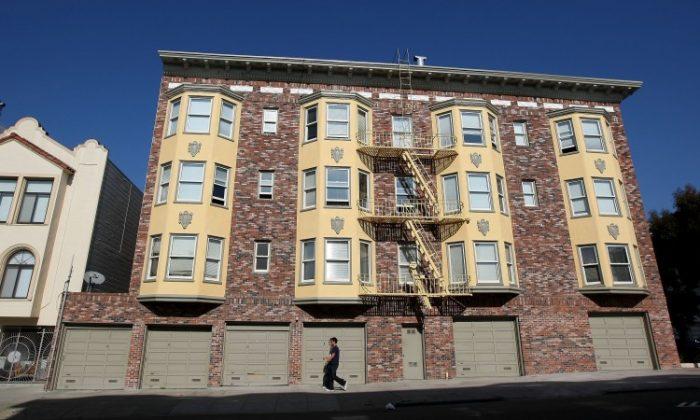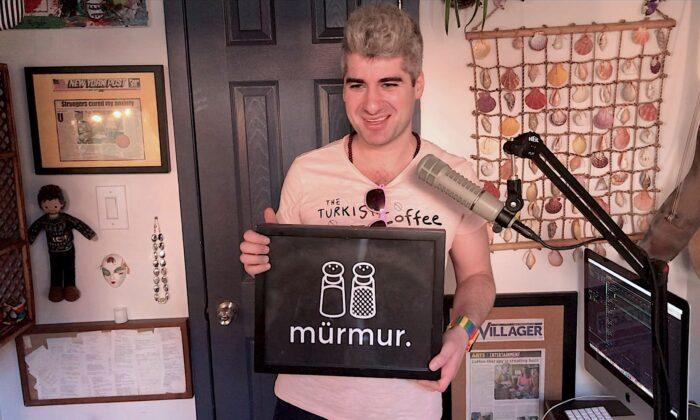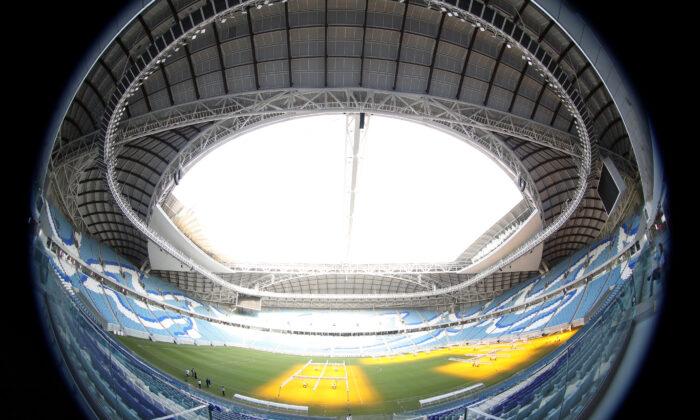SAN FRANCISCO—The Board of Supervisors wants to make it easier for financially struggling renters to stem off future rent hikes resulting from the costs of mandatory retrofits to apartment buildings, Board President David Chiu announced Tuesday.
A new ordinance will require owners of so-called soft-story buildings which have been deemed “particular vulnerable to severe damage and collapse” in the event of an earthquake to seismically upgrade.
The Mandatory Seismic Retrofit Program ordinance that passed unanimously its first reading at the Board Tuesday applies to buildings of five or more units that were built before 1978.
The city has identified a total of 44,000 units in around 2,800 buildings, predominantly located in the Marina District, that need an upgrade.
The legislation, sponsored by the mayor and six supervisors, aims to make it safer for 58,000 residents and 7,000 workers currently living and working in such buildings to survive the next earthquake and maintain a shelter.
However, tenant groups are voicing concerns that the ordinance will unequally burden renters. The Rent Stabilization Ordinance allows property owners to pass through 100 percent of the retrofit costs, of up to $20,000 per unit, to tenants.
“We do have be careful that in trying to do something to protect the safety of tenants that we don’t displace them by allowing rent increases that they can’t afford,” said Sara Shortt, executive director of the Housing Rights Committee of San Francisco.
The city’s Controller’s Office of Economic Analysis estimates rent hikes of up to $79 per month as a result of the retrofit. Especially long-term tenants that pay below-market rates could face the full pass-through of the costs.
On the other hand the city estimates an increase in income for property owners due to reduced repair work, exceeding the cost of the retrofit.
The office has identified a “potential gap between the costs and benefits for different groups of stakeholders.”
To meet those concerns Board President Chiu promised Tuesday to introduce “in the coming weeks” legislation that will make it easier for renters to be exempted from a pass-through.
In consultation with the Mayor’s Office on Housing and tenant groups like the Housing Rights Committee, Chiu wants to streamline the so-called hardship application process.
The trailing ordinance aims to make it clearer what kind of documentation is needed, at what income level tenants qualify and in what cases landlords can appeal, Chiu said.
Shortt expressed support for the retrofit legislation on the condition the new legislation will allow a “fair process” for renters.
Supervisor Jane Kim said she hopes the hardship application will become a “little less invasive.” Now renters often have to reveal their financial situation in front of landlords. Plus, the current process is too burdensome for elderly and non-English speaking renters, a large proportion that would qualify for exemption, she said Tuesday.
The legislation should be “ensuring that the most vulnerable are not priced out of the rental market and priced out of San Francisco because of the work we are doing to save affordable rental stock,” Kim said.
Soft-story buildings are wood-frame structures that are considered “potentially hazardous to life in the event of earthquake” since the first story has a perimeter wall with large openings for a garage door or windows.
Besides being prone to collapse, these buildings more easily catch fire, which poses an additional threat to inhabitants and the neighborhoods.
The city estimates that 7,700 housing units or almost 50 percent of those damaged in the Loma Prieta 1989 earthquake were soft-story buildings.




